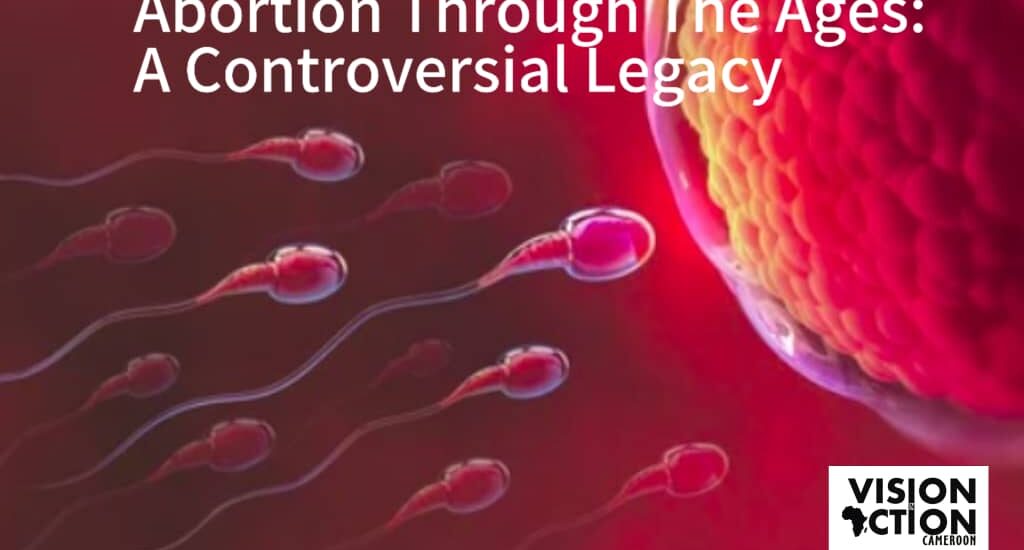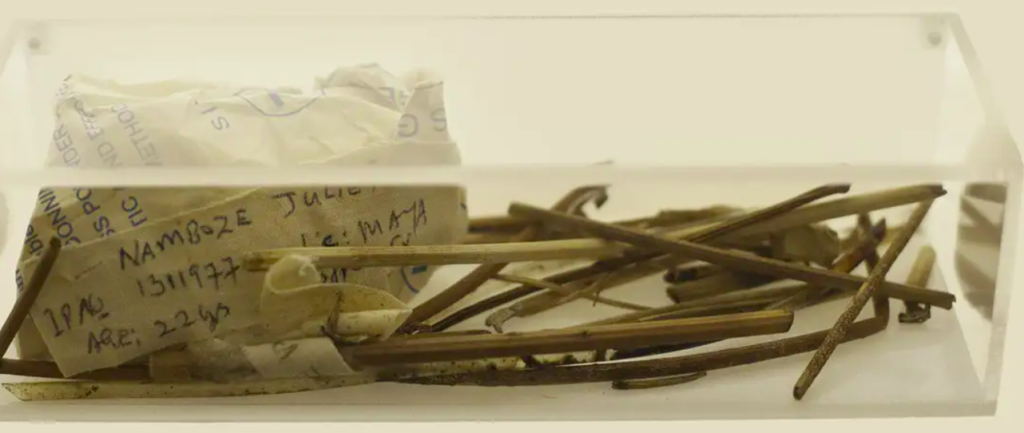- August 23, 2024
- Posted by: Viacame Communication
- Categories: Advocacy, community development, Education

DID YOU KNOW THAT ABORTION HAS EXISTED SINCE TIME ONTOLD I VARIOUS FORMS .There are few socially and politically divisive subjects as divisive as abortion. Abortion is a topic that has been extensively discussed for millennia and we still haven’t come to a conclusion on. This is what distinguishes abortion from many other contentious situations. Let’s review the abortion history in this essay
Introduction
The process of ending a pregnancy by removing or expelling a fetus or embryo is known as an abortion. “Spontaneous abortion” or miscarriage refers to an abortion that happens naturally; between 30% and 40% of pregnancies result in this type of abortion. “Induced miscarriage” is a term used less frequently to describe intentional efforts taken to end a pregnancy. Birth control and reducing family size are the two most frequent justifications offered by women for getting an abortion. Maternal health issues, financial hardship, domestic abuse, a lack of support, feeling too young, wanting to finish school or pursue a job, and not being able or ready to parent a child conceived as a consequence of rape or incest are among the other reasons mentioned.
Creator of 4000 Years for Choice and graphic artist Heather Ault told Truthout, “Women have and always will have abortions.” “Containing pregnancy is essential to human existence, and all human societies have utilized various methods of doing so, with varying degrees of success, using the resources and expertise available to them at the time, such as spells, toxic herbs, or early surgical techniques.”
The subject of how abortion was carried out in the premodern era always comes up when discussing the practice. While modern family planning clinics and hospitals use a variety of cutting-edge procedures and medications, in the past, individuals employed more primitive ways as well as some abortifacient plant
Abortion some millennia’s ago
Abortion has been practiced for millennia, with evidence from ancient civilizations like Egypt, Greece, Rome, China, and India showing the use of various methods to terminate pregnancies. Far from being a modern phenomenon, abortion has been a consistent aspect of human history, often occurring despite, or even in response to, legal restrictions. Early philosophers like Aristotle debated the morality and timing of abortion, with some arguing that a fetus did not attain life or form until 40 days after conception for males and 80 days for females.
Abortion methods in ancient times were diverse, including the administration of herbs, the use of sharpened tools, and the application of abdominal pressure. Non-surgical techniques, such as strenuous physical activities like labor, climbing, and paddling, were commonly employed. Other methods included the use of irritant leaves, fasting, bloodletting, and exposure to heat, such as lying on a heated coconut shell or sitting over a pot of steam or stewed onions, as described in an 8th-century Sanskrit text. In ancient Egypt, papyrus records suggest the use of a plant-based pessary to induce abortion, while in ancient Greece, physicians like Hippocrates recommended a mix of herbs and physical manipulation
In Japan, the practice of *mizuko kuyo* involves rituals performed to honor and pacify the spirits of aborted fetuses, reflecting a complex cultural relationship with abortion that spans centuries. Similarly, in the indigenous cultures of the Americas, various plants and herbal concoctions were used to induce abortion, a practice that was often accompanied by spiritual rituals to seek the favor or forgiveness of deities.
Techniques like massage abortion, which involved applying pressure to the abdomen, were also practiced, particularly in Southeast Asia. In Medieval Europe, abortifacient herbs like pennyroyal and rue were commonly used, despite the Church’s condemnation of abortion, highlighting the persistence of these practices even in the face of religious and legal opposition
These methods were developed through observation, adaptation of obstetrical practices, and the exchange of knowledge across cultures, continuing to be used in various forms well into the Early Modern Period. The history of abortion, therefore, is a rich tapestry that reflects the intersection of medicine, culture, religion, and law across different societies and eras, demonstrating that the practice has been both a private matter and a public concern for thousands of years.

Africa’s Historical view point
Ten generations ago in Africa, including Cameroon, abortion practices were deeply rooted in traditional knowledge, spiritual beliefs, and social structures. Common methods included the use of herbal remedies by traditional healers, physical manipulation, spiritual rituals, and, in extreme cases, ingestion of toxic substances. The legal and social frameworks were governed by customary laws and community norms rather than formal legal systems. Abortion was sometimes tolerated in cases like rape, incest, or health risks, but attitudes varied widely across different cultures. Over time, colonial influence and Western religious systems began to reshape these practices and attitudes, leading to a clash between traditional and newly imposed moral standards.
Evolution of Restrictive Laws on Abortion
Laws pertaining to abortion differ greatly between nations and regions and have evolved over time. These laws can cover anything from making abortions freely available upon request to imposing different types of regulations or limits to outright banning them under all conditions. Depending on the reason, many nations and territories that permit abortions have gestational limits of up to 12 weeks for abortions on demand, up to 24 weeks for rape, incest, or socioeconomic reasons, and longer for fetal impairment or risk to the woman’s health or life. 60% of the world’s population will live in nations that permit abortion on demand or for financial reasons as of 2022. The first nation to specifically safeguard abortion rights in its constitution was France in 2024
In many nations, the topic of abortion is still debatable for religious, moral, ethical, practical, and political reasons. Abortions remain widespread in many places, including in those where they are prohibited by law, despite having been outlawed and subject to additional legal restrictions in numerous countries. Abortion rates are comparable in nations where the operation is legal and in nations where it is illegal, per a 2007 study carried out by the Guttmacher Institute and the World Health Organization [2].[3] because modern contraception are unavailable in places where abortion is prohibited.[4] The research also indicates that fewer abortions are performed globally as a result of easier access to contraception.
Abortion was prohibited by common law in both England and the United States at any point after quickening, or the moment the woman began to feel the fetus’ movements. The fetus was not regarded as a “reasonable being” in rerum natura under the born alive rule, and abortion was not regarded as murder under English law.
Many Western nations started codifying abortion laws or imposing additional limits on the practice in the 19th century. A variety of organizations opposed to abortion for moral reasons as well as medical experts worried about the risks associated with the procedure and the frequent involvement of non-medical workers in abortion performance spearheaded anti-abortion initiatives. However, it became evident that unlawful abortions persisted in large numbers But during the first half of the 20th century, abortion regulations had started to become more permissive in many nations—at least when the procedure was carried out to preserve the woman’s life, and sometimes even at her request. The Soviet Union, under Vladimir Lenin, became the first contemporary state to allow abortion on demand; the law was initially implemented in the Russian SFSR in 1920, followed by the Ukrainian SSR in July 1921, and eventually the entire nation.
The Abortion Act of 1967 in the United Kingdom made abortions permissible up to 28 weeks (later decreased to 24 weeks). Other nations soon followed, such as Tunisia (1969), Canada (1969), and the United States (1973 in most states, per the ruling of the U.S. Supreme Court in Roe v. Wade, which legalized abortion statewide), However, these countries vary greatly in the circumstances under which abortion is to be permitted. From 1999 right up to 2023 26 more countries have added to the above-listed countries that not only legalize abortion but have policies that protect against fatal cases or restrict resources to cases of intended pregnancy termination
conclusion
Over time, abortion has evolved from being viewed as wrong to being partially accepted, then allowed under specific conditions, and finally accepted in the majority of countries, if not all of them.
Eleven states decriminalized abortion in the 1960s as a result of the Women’s Rights Movement. Although abortion is permitted in practically every country, at least under certain restrictions, these restrictions differ greatly..
References
- Brodie, Janet Farrell (1997). Contraception and abortion in nineteenth-century America. Ithaca, New York: Cornell University Press. p. 254. ISBN 0-8014-8433-2. OCLC 37699745.
- ^ Abortion. CUP Archive. 27 October 1977. ISBN 9780521214421.
- ^ Constantin-Iulian Damian (January–March 2010). “Abortion from the Perspective of Eastern Religions: Hinduism and Buddhism” (PDF). Romanian Journal of Bioethics. 8 (1). Archived from the original (PDF) on 2012-09-03.
- ^ “Sloka & Translation | Valmiki Ramayanam”. www.valmiki.iitk.ac.in. Retrieved 2023-11-30
- https://pdxscholar.library.pdx.edu/younghistorians/2023/papers/8/
- Niewiarowski, Erik. “France makes abortion a constitutional right in historic vote”. PinkNews. Retrieved 5 March 2024.
- ^ Jump up to:a b “Abortion Rates Similar In Countries That Legalize, Prohibit Procedure, Study Says”. International Consortium for Medical Abortion (ICMA). Archived from the original on 23 March 2014. Retrieved 23 March 2014.
- ^ Jump up to:a b Sedgh, Gilda; Henshaw, Stanley; Singh, Susheela; Åhman, Elisabeth; Shah, Iqbal H. (13 August 2007). “Induced abortion: estimated rates and trends worldwide”. The Lancet.
- “Decree on Women’s Healthcare”. People’s Commissariat of Health. 18 November 1920. Archived from the original on 18 December 2021.
- ^ Jump up to:a b Avdeev, Alexandre; Blum, Alain; Troitskaya, Irina (1995). “The History of Abortion Statistics in Russia and the USSR from 1900 to 1991”. Population: An English Selection. 7: 39–66. JSTOR 2949057.
- ^ Goldman, Wendy Z. (2004). Women, the State and Revolution: Soviet Family Policy and Social Life, 1917–1936. Cambridge University Press. ISBN 978-0521458160.
- ^ Overy, Richard (2004). The Dictators: Hitler’s Germany, Stalin’s Russia. W. W. Norton Company, Inc. ISBN 978-0141912240
- https://symbolsage.com/a-brief-history-of-abortion/#top_ankor
- https://www.bbc.co.uk/globalresources/mothballing
